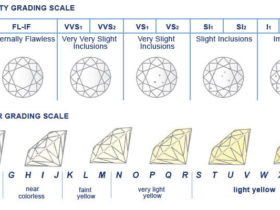I’m sure we’ve all encountered the term “water resistant” when we go shopping for watches. But what does that actually mean? Well, it turns out, it’s not what you think it means.
Water resistance when it comes to watches is a complicated issue, mostly because of misconceptions, complex terminologies, and strict watch making standards that traditional watchmakers follow. Knowing the difference between water-resistant and water-proof, 200BAR and 150BAR, and so on and so forth, could mean the difference between ruining a good watch and saving it for years to come.
Water Resistant VS. Water Proof
Right off the bat, let’s clarify: there’s no such thing as “water proof” watches. The term “water proof” was banned by the International Organization for Standardization, or ISO, from being used to describe watches because it was misleading. To get around this, the ISO eventually specified exact testing and requirements for watches to bear the “water resistant” stamp of approval.
This doesn’t mean, of course, that all watches will start leaking. When a watch is underwater, water pressure exerts its weight on the watch. If not properly sealed, bubbles, gas, or even water, will start seeping into the watch and ruining it.
All water-resistant watches, however, are certified to resist water to certain depths, lengths of time underwater, and so on and so forth. Some of the best waterproof watches for men are naturally water resistant for deeper water depths and longer amounts of time than, say, a luxury watch. To be sure, always ask the manufacturer for the exact depth your watch is water resistant to.
Terminologies Regarding Water Resistance
The water resistance rating on your watch will tell you how much water pressure that your watch can handle. The number that comes with the mark is usually indicating one of two things: ATM or BAR. ATM stands for atmosphere, which usually equals to 10 meters. Meanwhile, the BAR is an alternative term for atmosphere. So if a watch is “10 BAR water resistant”, it means it can resist water pressures that are usually felt at depths of 100 meters.
However, do take note that these are ratings that were determined in the static environment of a laboratory. In reality, different types of water exert different types of pressure: for example, a wave on the beach can slam onto your watch at atmospheric pressures greater than your watch is rated for, albeit for a split second. Try not to take the ratings literally: just because your watch is rated for 30 bar water resistance, it doesn’t mean you can dive down to 300 meters and expect your watch to survive.
Rapid shifts in pressure can also affect water resistance, like when you dive into a pool. The sudden change in pressure can have negative effects on your watch, so caution is advised. Sudden temperature changes can also affect your watch’s water resistance, as heat and cold can have adverse effects on the seals and gaskets of the watch. Repeated use, as well as time and normal wear-and-tear all, have a hand at changing your watch’s water resistance.
Even clothing can have an effect. Heavier fabrics like cinch clothing can exert pressure on your watch when it’s wet while lighter fabrics won’t.
Common Water-Resistance Markings
There are 4 common levels of water-resistance, with each level representing different varieties of activities that you can do with it:
30 meters (3 ATM/3 bar)
One of the most common ratings for cheaper watches for men, 3 BAR water-resistant watches can usually withstand very light water pressures, such as hand washing or water from a shower, or rain. However, take note that these watches are also more sensitive to heat, as hot water can cause the seals to expand or contract and eventually break. If the seals break, then water damage is to be expected. Your best option is to treat this watch as if it wasn’t water resistant at all, and just try to keep it as dry as possible.
50 meters (5 ATM/5 bar)
5 BAR water-resistant watches are much sturdier than their 3 BAR brethren, and are more reliable when it comes to splashes and showers. However, it’s still not advisable to submerge these in water, as the seals and gaskets might not hold.
100 meters (10 ATM/10 bar)
10 BAR water-resistant watches are the ones you need if you want to go swimming with your watch on. However, take note that this isn’t advisable for scuba diving, or high-impact water sports like surfing, jet ski racing, and the like.
200 meters (20 ATM/20 bar)
A 200-meter rated watch is a diving watch. It can handle pretty much any form of swimming or diving you throw at it. The exception is extreme deep-sea diving, for which specialized watches exist that go to 500 or 1000 meters. These are pretty rare. This is the watch you want when you absolutely need to dive with a watch on. 20 BAR water-resistant watches are rated for scuba diving; however, they’re not advisable for deep-sea dives.
500 meters (50 ATM/50 bar)
These watches are relatively rare and are specialized watches made particularly for deep-sea divers or scientists studying ocean floors. If you’re just going to use this for your everyday office work, you might be better off with something a little less expensive.











